myHIN Blog
Category: Health Articles

July 05, 2022
Bias in not just in HealthCare: Algorithmic equity in the hiring of underrepresented IT job candidates
published in Online Information Review, Special Issue on Social and Cultural Biases in Information, Algorithms, and Systems by Lynette Yarger, Fay Cobb Payton, Bikalpa Neupane; picked up in IEEE Spectrum Feature
#AlgorithmicBias #AI #Bias #TalentManagement #Tech #DesignJustice
Share

June 27, 2022
Fay CObb Payton (Presenter), The American Association for the Advancement of Science (AAAS) AI Symposium – Health Care Panel
Fay Cobb Payton (Presenter), The American Association for the Advancement of Science (AAAS) AI Symposium – Health Care Panel
#AI #Bias #HealthCare #Race #UnderservedGroups
Share

June 13, 2022
Managing Hypervisibility in the HIV Prevention Information Seeking Practices of Black Female College Students
published in Journal of the Association for Information Science and Technology by Lynette Kvasny Yarger and Fay Cobb Payton
#HealthCare #UX #InformationSeeking #BlackWomen #Hypervisibility
Share

June 08, 2022
Text Mining Mental Health Reports for Issues Impacting Today’s College Students: Qualitative Study
published in Journal of Medical Internet Research – Mental Health (JMIR Mental Health) by Fay Cobb Payton, Lynette Kvasny Yarger, Anthony Thomas Pinter (download); Picked up by Inside Higher Education
#NLP #TextMining #MentalHealth #CollegeStudents
Background:
A growing number of college students are experiencing personal circumstances or encountering situations that feel overwhelming and negatively affect their academic studies and other aspects of life on campus. To meet this growing demand for counseling services, US colleges and universities are offering a growing variety of mental health services that provide support and services to students in distress.
Conclusions:
Higher education institutions are actively engaged in extending mental health services and offering targeted outreach to students of color. Cluster analysis identified that institutions are devoting more and innovative resources in response to the growing number students who experience mental health concerns. However, there is a need to focus on proactive approaches to mitigate the causes of mental health and the aftermath of a negative experience, particularly violence and sexual assault. Such strategies can potentially influence how students navigate their health information seeking and how information and communication technologies, including mobile apps, can partially address the needs of college students.
Share

May 04, 2016
Our Family Jewels
Our Family Jewels is the radio show DJ’d by my brother, Jules, and his co-host Steve, at Middlebury College in Vermont. The show is takes place each Sunday at 7pm, during what is referred to as “Hump Hour” at Middlebury. Jules and Steve have organized a show that plays songs related to sex or the sex lives of them and their friends, in one way or another. While playing a diverse range of genres they offer segments titled, “Story time with Steve”, “Pillow Talk”, and “Reachin’ and Teachin’”. These segments share entertaining personal experiences, little known facts or relevant news related to sexual health, with each week ending in a text from our parents expressing their enjoyment and sometimes surprise, from the last episode.
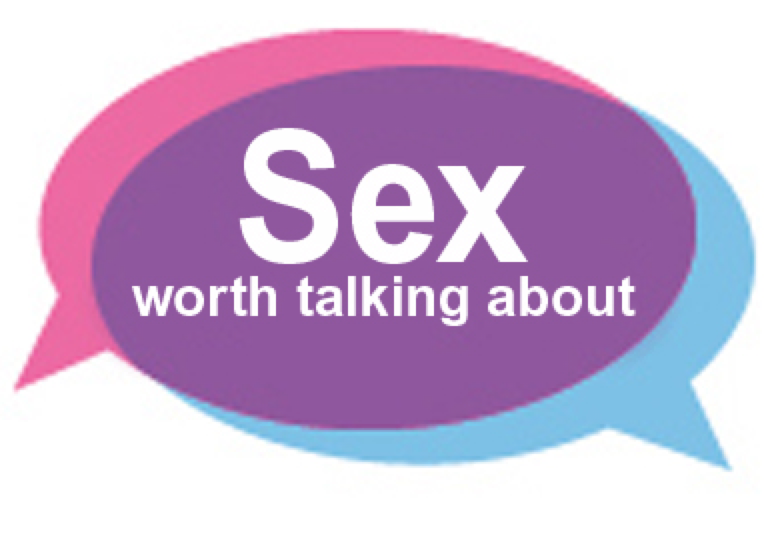 When the show first aired, my roommates and I sat in our living room listening in as Steve and Jules shared stories and played music. I found myself in fits of laughter during the segments and was almost as entertained by our family group text as I was by Our Family Jewels. Through the jokes and lightheartedness, I wanted to be sure to remind him of the importance of safe and consensual sex. The topic of sex is not one we shy away from in my home. From a young age, our parents were very clear about the importance of safety and our intimacy being consensual, a discussion many parents choose to avoid. In spirit of the radio show, MyHealthImpactNetwork offers readers the opportunity to learn more about health in a general sense. The Health Facts section of the site, speaks to the health literacy of our nation. Health literacy is defined by the National Network of Libraries of Medicine as being "the degree to which individuals have the capacity to obtain, process, and understand basic health information and services needed to make appropriate health decisions." Unfortunately, levels of health literacy are low, with only 13% of the population between the ages of 16 and 49 at a proficient level. This interferes with a patient’s ability to make educated decisions on their health and have the necessary conversations regarding their health status with their respective healthcare providers.
When the show first aired, my roommates and I sat in our living room listening in as Steve and Jules shared stories and played music. I found myself in fits of laughter during the segments and was almost as entertained by our family group text as I was by Our Family Jewels. Through the jokes and lightheartedness, I wanted to be sure to remind him of the importance of safe and consensual sex. The topic of sex is not one we shy away from in my home. From a young age, our parents were very clear about the importance of safety and our intimacy being consensual, a discussion many parents choose to avoid. In spirit of the radio show, MyHealthImpactNetwork offers readers the opportunity to learn more about health in a general sense. The Health Facts section of the site, speaks to the health literacy of our nation. Health literacy is defined by the National Network of Libraries of Medicine as being "the degree to which individuals have the capacity to obtain, process, and understand basic health information and services needed to make appropriate health decisions." Unfortunately, levels of health literacy are low, with only 13% of the population between the ages of 16 and 49 at a proficient level. This interferes with a patient’s ability to make educated decisions on their health and have the necessary conversations regarding their health status with their respective healthcare providers.
I am glad that my brother has found an entertaining way to make the discussion of sex and its health implications more comfortable for his peers. It is important that we are able to take responsibility for our own health. This ties into being literate, but also falls in the hands of others to provide the necessary support to those who are not yet comfortable with their knowledge of health. Decisions made regarding one’s health can have lifelong implications, making it imperative that a basic level of health literacy can be met.
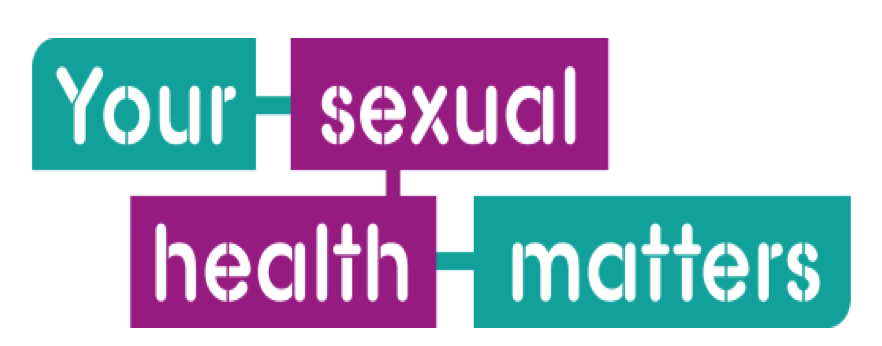
If you would like to look into health literacy or other areas of health, there is the opportunity to do so at https://myhealthimpactnetwork.org/health-facts/cat/health-literacy. The National Network of Libraries of Medicine also offers information on health literacy and can be found at http://nnlm.gov/outreach/consumer/hlthlit.html#definitions. To listen in to Our Family Jewels you can follow the link to Middlebury College Radio, http://wrmc.middlebury.edu/. My brother’s show airs on Sundays from 7pm - 8pm, enjoy!
Figure 1: http://tfosuccess.com/sexual-health/
Figure 2: http://www.kent.gov.uk/social-care-and-health/health/sexual-health
Share

January 28, 2016
Real Friends
Kanye West recently released a record titled, “Real Friends.” The song provides an introspective look at West’s relationships, which in turn has prompted me to do the same.
As I continue to age, I increasingly see the value in having a strong cohort of friends with whom you can share time, advice, and experiences. It is not enough however to just have a group of friends. It is important for me to be in an environment that promotes growth and support. Surrounding myself with friends who are inspiring and striving for their own success is one of the many ways I create a healthy environment.
 As many of my friends are preparing their post-graduation plans, it can be a time of high stress and relative unclarity. This is where I find value in the companionship provided by friends. With the diversity of experiences throughout my friends, I have seen their creativity fruition into ideas on how to follow their passions through the pursuit of a profession or continued education. The creativity extends past pursuing passions. Our discussions include planning how we will contribute to each other’s successes, providing not just an emotional support but also a support network for our futures.
As many of my friends are preparing their post-graduation plans, it can be a time of high stress and relative unclarity. This is where I find value in the companionship provided by friends. With the diversity of experiences throughout my friends, I have seen their creativity fruition into ideas on how to follow their passions through the pursuit of a profession or continued education. The creativity extends past pursuing passions. Our discussions include planning how we will contribute to each other’s successes, providing not just an emotional support but also a support network for our futures.
These networks have been an integral part of my success since high school. As one of very few students of color at the private school I graduated from, we shared some common experiences in our environment. These experiences created a camaraderie among us that lasts even to this day. Our accomplishments are shared and our shortcomings are uplifted, and for this I am appreciative. 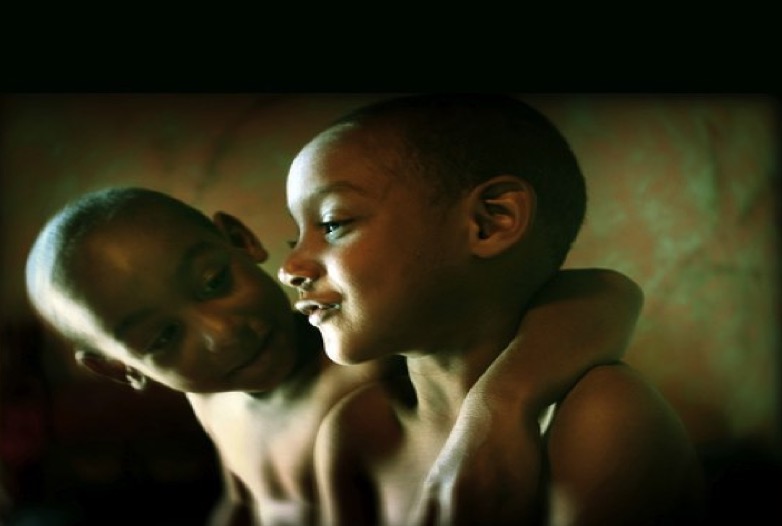
I have long found great value in being deliberate in the expression of love and appreciation for those in my life. With that being said, a special thank to all of my friends from high school, as well as those who I have had the great pleasure of growing with during my time here at NC State. Check out @myhealthimpact and www.myhealthimpactnetwork.org for this and other information of #health, #culture, #tech and #STEM.
Figure 1: http://www.christcitychurch.ie/life-groups-what-are-they/
Figure 2: http://epasda.org/events/were-in-this-together/
Share

December 09, 2015
Decisions, Decisions: Sexual Health Education or Mental Health
Public Health Education is such a broad field of study, with a vast selection of areas to choose from. There’s tobacco, global health, epidemiology, climate change and a host of others. Out of these various topics, I find myself drawn to a few that seem to peak my interest: Sexual/Reproductive Health education, Domestic Violence, and Suicide/Depression. I haven’t decided exactly which area I want to focus on after graduation, but I have tried to educate myself on these topics.
My interest in Sexual Health came about in my Human Sexuality class that I took my first semester in the Health Education department. At first I only took it because I just need another health elective to take and didn’t think anything of it. We discussed so many things in that short amount of time and I was hooked ever since. My professor has been very influential in my decision to teach sexual health education.

On the weekend of November 21st, I had the privilege to volunteer at the 10th Annual Teen Talk Lock-In for the Wake County Health Department. It was an all night, interactive sexual health education workshop for teens. The key areas of focus were attitude & mindset, healthy lifestyles, and access to resources. They had 5 workshops on building positive and healthy relationships, coping and looking forward to positive outcomes, what love is and how to communicate your love to others, understanding your body inside and out, respecting different lifestyles and identities, and also the importance of Sexual Health Education and HIV/STI testing. I was able to go from session to session with the kids and observe the different speakers, my professor being among them. Seeing them interact with this age group, 12 to 17 year olds, further convinced me that I need to do sexual health education. I would like to further help in the fight to make sex a normal thing to talk about in everyday conversation.
October was Domestic Violence Awareness Month, and I was appointed Chair of the 2nd Annual Women’s Empowerment Program for our Department of Health Education at North Carolina Central University. The purpose of this year’s program was to increase awareness of Intimate Partner Violence (IPV) and its correlation to HIV incidence among college women, through education, empowerment, and condom usage. The goal of the program was to empower young college women to RESPECT themselves in order to PROTECT themselves from HIV. Our keynote speaker and founder of Healing after Domestic Violence (HAD). Her story was so powerful, there wasn’t a dry eye in the house. The program targeted 18 to 24 females on campus. Being in the city of Durham, the young ladies on campus are bound to meet and maybe even start relationships with boys on campus as well as from the surrounding areas. For many of these girls, it is their first time away from home, without direct supervision, and they are likely to take advantage of that. Unfortunately for them, not everyone they deal with will have their best intentions at heart. What can start out as a sweet and loving relationship, can go really south, really fast. The program highlighted signs of domestic violence and where to seek help. There were also booths set up, by myself and my fellow Public Health Associates, showcasing different Social Marketing campaigns focused on Intimate Partner Violence. Resources that are available on campus also had booths set up.
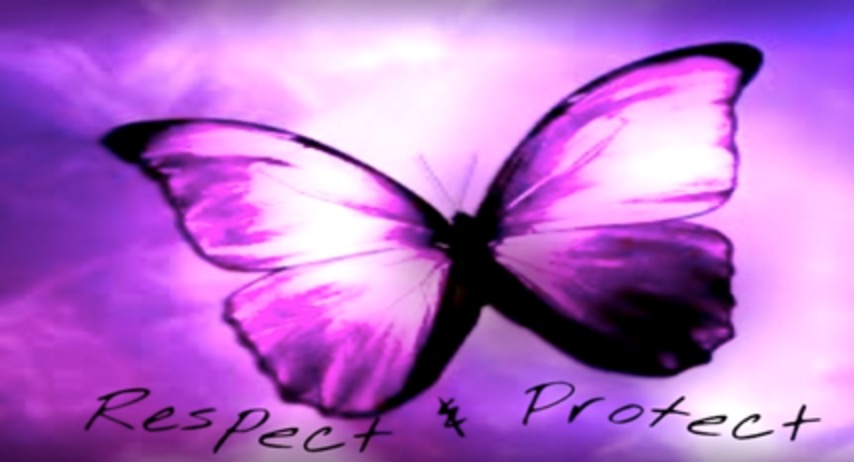
In my research class, we had to choose a health topic to do research on. Normally, I would chose HIV/AIDS, but this time I did suicide and depression, focusing on African American women. I was very surprised that it was hard to find almost any articles on my target population. I’m talking about hours and hours of searching for an article even remotely focusing on depression or suicide in African American women. It was alarming to me, and made me think why no one had decided to do any research on this underserved population, in this regard. As a part of the aforementioned population, I personally know that depression is real in the African American community. There is also a stigma attached to it. I’ve heard people say “Black people don’t get depressed. That’s only crazy white people. Just get over it.” What people don’t realize is that downplaying anyone’s feelings of depression is not helping them at all, and possibly even worsening it, leading them to suicide. If I were to choose this as my final area of focus, I would definitely want to go into research regarding African American women and teenagers.
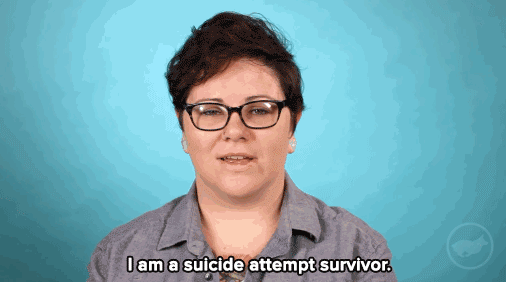
I wasn’t sure how Public Health Education was going to work out for me when I first transferred to the department, but I soon found my place. I chose to focus on these topics for various reasons. I know people who don’t know how some STIs are transmitted and don’t know how to use condoms properly. I know others who have been in abusive relationships, not even realizing that they were in one, and not want help trying to leave the person. That hurt me, that as their friend, they didn’t want me trying to help them. I, myself, struggle with my own depression, and dealing with it. There is always someone who needs public health education and resources, and as a future health educator, I am working hard so that one day I can help others with their problems.
Follow @myhealthimpact on health and tech stories impacts #youngppl. #publichealth #mentalhealth #sexualhealth
Share

December 03, 2015
The Evolution of Sneaker Design Technology pt1
Over the years I have owned just about every kind of sneaker imaginable. Ranging in price from $35 to over $200, if it was hot and my mom could afford it, they were on my feet. From classic Chuck Taylors to Italian owned Filas and even the GOAT Jordans that still outsell just about every other sneaker on the market today. I’ve been in love with footwear for a very long time. From fancy colorways to exclusive collabs, I never thought about the evolution of sneakers until a few years ago when I developed shin splints during a routine workout. It was at this very time that I thought to myself, what percentage of this pain was caused by the shoes on my feet? As a trained computer scientist, I did what most technologists would do call the family podiatrist open up Google search and fire off a few queries. What I got back was pretty interesting:
- Could Your Shoes Be Giving You Shin Splints?
- Worst Shoes for Your Foot Health
- How Shoes Cause Flat Feet and Overpronation
- How Does Your Arch Height Affect Your Shoe Choice and Injury Risk
Not only did my search expose certain brands but styles of shoes too -- ultra high heels, flip flops, and ballet shoes were all known to cause foot problems. I was pretty alarmed at the findings and wanted to know if anyone was looking into solving these types of foot problems through the next generation of footwear design.
Both Adidas and Nike had already invested a good bit of money into their Research and Development division to solve unique problems. Adidas was working on FutureCraft 3D (via YouTube), a unique 3D-printed running shoe midsole which can be tailored to the cushioning needs of an individual’s foot. While Nike took on accessibility by literally reinventing the zipper on performance sneakers. They developed Flyease technology, a system that solves a problem for amputees, stroke victims, and people with cerebral palsy. By using a subtle zipper that snakes around the heel, they were able to let you peel open and close your shoe with one hand.

Neither of these two technologies are widespread yet but I am excited to the see impact foot health has on shoe manufacturers moving forward. With 3D printing, more durable and breathable materials and a conscious customer, someday we’ll live in a world where foot problems are alleviated not created by the shoes we throw on in the morning.
Tweet @myhealthimpact to let us know what you think and tune in for the latest and greatest in #tech, #STEM, #wearables and #health focused blogs!
Share

November 19, 2015
Mental Health Among My College Peers
I wish that individuals suffering from mental health issues could feel the embrace of support on a national scale. I think about the utilization of pink to express the support of breast cancer and seeing it on television, on football fields, and on college campuses. I think of the hope that comes with such support, and I long for something similar in regards to mental illness. The American Psychological Association reported that 44% of the patients who visited college counseling services “had severe psychological problems.” This number, however high, does not begin to tell the full story on mental health, especially in the college aged demographic. The stigma surrounding mental health issues is often silencing, which is why it must be spoken about deliberately. In the last year, NC State has lost two students to on-campus suicides, and even more outside of campus. This is to say the least, both concerning and devastating.
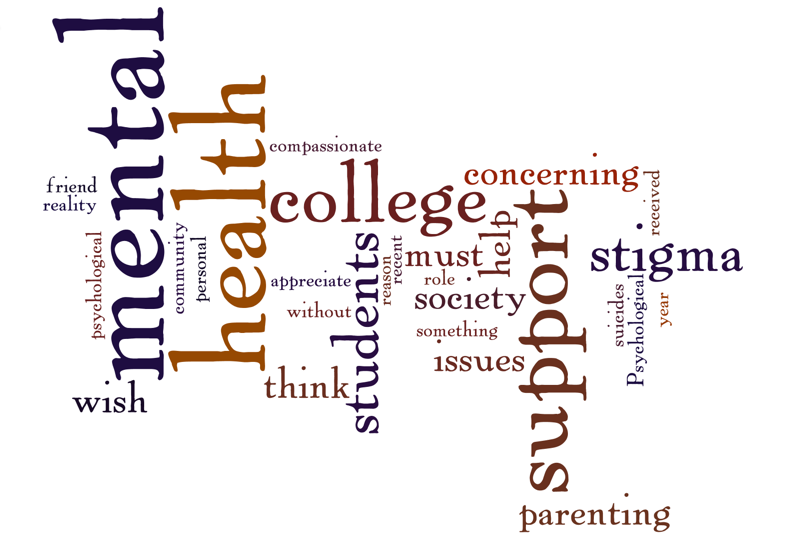
I am very thankful of my parents for raising me to be a compassionate friend and an attentive listener. They modeled for me to listen without judging and as a result I believe many of my friends have felt comfortable sharing openly with me their stress and worries. Some may say I am a bit hypersensitive to the mental health of others, I don't mind that personality trait. In a recent conversation with my mother who has practiced as a psychotherapist for over 20 years, she reminded me that one of the biggest barriers to young adults seeking help for their mental health is the role that stigma plays in our society. The reality of stigma is that it perpetuates isolation, shame, and hopelessness. It is understandable that individuals with emotional distress would be hesitant to ask for help in this environment.
As a society, we are generally unaware of the level of struggle that college students face with regard to mental health. There are students who walk in the dark every day without feeling supported and it is up to us as friends, faculty, acquaintances, classmates, and a community to help break the silence, increase awareness and show more compassion to those suffering from mental illness. We have both an individual and collective responsibility to support each other, this is the only way out of the stigma of mental illness.
Follow @myhealthimpact for real talk on often hard topics.
#mentalhealth #collegestudents #stigma #supportsystems
Share

October 22, 2015
STEAM and Sports
There has been much discussion on Baltimore Ravens offensive lineman, John Urschel. Urschel is currently in his second NFL season, but his energy is not fully invested in football. While attending and playing football at Penn State University, he earned both a bachelor’s and master’s degree in mathematics. He is currently working towards a PhD in applied mathematics and was invited to speak to NSA mathematicians about an algorithm created by him, to aid in the organization of large amounts of complex data. His published works have been widely celebrated in and outside of the mathematics community. Urschel has been one of the more prominent figures pushing the importance of STEM education in school. He has taken his position in the community to tour Baltimore and speak at local schools. Although he is currently being profiled with articles about him found in the Huffington Post, Sportsnation, and Sports Illustrated, he is not the only NFL athlete who has dedicated his time to STEAM education. Vernon Davis, the San Francisco 49ers current tight end has also been highlighted.
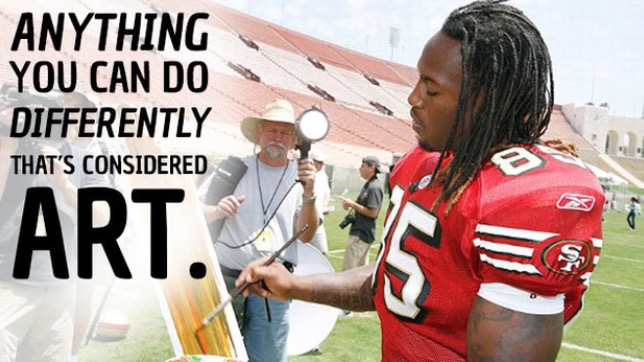 Vernon Davis grew up in inner city Washington, DC and quickly noticed his passion for visual art. He went on to change his major while at the University of Maryland from criminal justice to studio art. He now continues to pursue his passion of art through painting. He now sponsors a visual arts scholarship, promoting the arts for interested high schoolers in the San Francisco area. Davis, who was initially embarrassed by his interest in the arts while a high school student, has said that the arts have provided him with a refuge away from football life. It has also taught him the importance of self-confidence, and wants to be sure that students interested in the arts are able to follow their interests regardless of social pressures of their peers.
Vernon Davis grew up in inner city Washington, DC and quickly noticed his passion for visual art. He went on to change his major while at the University of Maryland from criminal justice to studio art. He now continues to pursue his passion of art through painting. He now sponsors a visual arts scholarship, promoting the arts for interested high schoolers in the San Francisco area. Davis, who was initially embarrassed by his interest in the arts while a high school student, has said that the arts have provided him with a refuge away from football life. It has also taught him the importance of self-confidence, and wants to be sure that students interested in the arts are able to follow their interests regardless of social pressures of their peers.
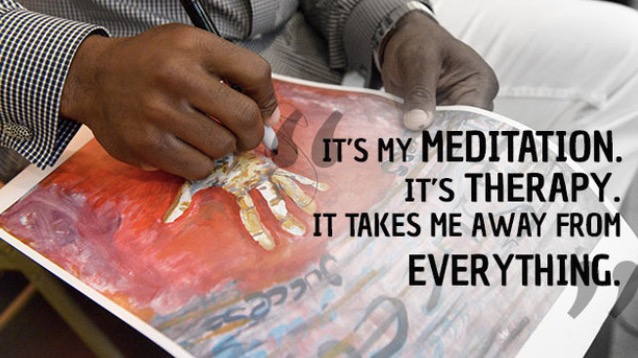 These two athletes are providing a great example of the multidimensionality of professional athletes. These men have dedicated hours upon hours for a significant portion of their lives to football, but have found an alternative outlet in STEAM (Science, Technology, Engineering, Arts, and Mathematics). It is important to note that education in these domains is pivotal for our education system. We must expose children of all communities to these realms, providing them with a variety of options to pursue. The ability of Urschel and Davis to use their platforms to advocate for STEAM is a significant stride for education, especially in the underserved communities in which they have spent their time.
These two athletes are providing a great example of the multidimensionality of professional athletes. These men have dedicated hours upon hours for a significant portion of their lives to football, but have found an alternative outlet in STEAM (Science, Technology, Engineering, Arts, and Mathematics). It is important to note that education in these domains is pivotal for our education system. We must expose children of all communities to these realms, providing them with a variety of options to pursue. The ability of Urschel and Davis to use their platforms to advocate for STEAM is a significant stride for education, especially in the underserved communities in which they have spent their time.
Share
Page 1 of 7 pages 1 2 3 > Last ›
In Partnership with: Poole College of Management, College of Humanities and Social Sciences, National Science Foundation, Penn State
Take Action, Get Tested: Find Your Local Testing Center Why Get Tested?




